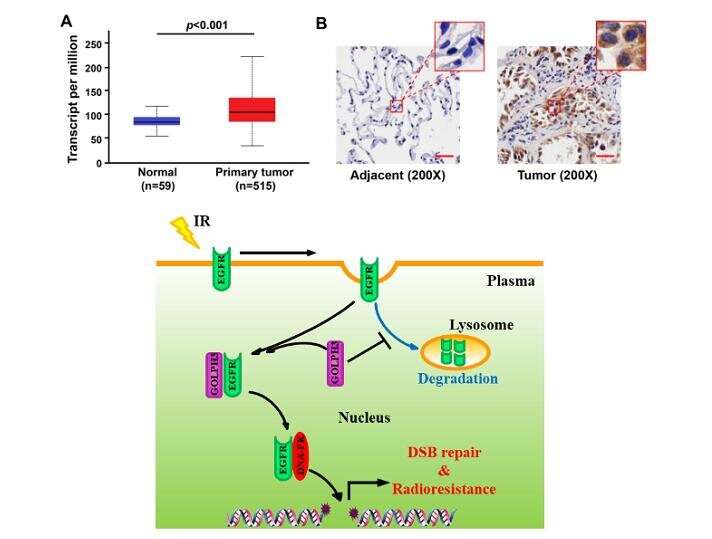
A research team led by Prof. Han Wei from the Hefei Institutes of Physical Science (HFIPS) of the Chinese Academy of Sciences (CAS) has recently found, for the first time, that GOLPH3, a protein located in the extranuclear organelle Golgi apparatus, mediated the formation of radioresistance in lung adenocarcinoma (LUAD). The finding confirms that GOLPH3 is a promising target for improving the efficacy of radiotherapy.
The study was published on International Journal of Radiation Oncology*Biology*Physics.
Tumor radioresistance is one of the main reasons that affect the efficacy of radiotherapy, and it is also the most worrying problem in clinical radiotherapy research. The mechanism of tumor radioresistance is still unclear.
GOLPH3, a novel oncoprotein, is closely associated with the poor prognosis of various malignant tumors. The researchers found that the level of GOLPH3 protein in tumor tissue of LUAD patients was significantly higher than that in adjacent tissues.

They also found that GOLPH3 positively regulates the level of epidermal growth factor receptor (EGFR) in various LUAD cells by inhibiting its degradation in the lysosome, and promotes the accumulation of EGFR in the nucleus after irradiation. The nuclear EGFR triggers DNA-PK activation by forming a complex with DNA-PK, enhancing the DNA damage repair and radiation resistance of LUAD.
Furthermore, through lentivirus infection and intratumoral injection of adenovirus, interference with the expression of GOLPH3 in LUAD cell lines and xenografts can significantly weaken DNA damage repair, promote cell death and inhibit tumor growth after irradiation, which confirms that targeted inhibition of GOLPH3 to reduce the radioresistance of LUAD has some clinical value.
More information:
Guodong Chen et al, Golgi Phosphoprotein 3 Confers Radioresistance via Stabilizing EGFR in Lung Adenocarcinoma, International Journal of Radiation Oncology*Biology*Physics (2021). DOI: 10.1016/j.ijrobp.2021.11.023
Journal information:
International Journal of Radiation Oncology*Biology*Physics
Source: Read Full Article